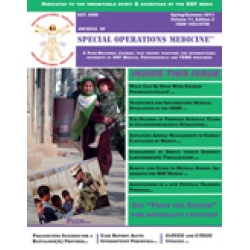A Comparison Of Direct Versus Indirect Laryngoscopic Visualization During Endotracheal Intubation Of Lightly Embalmed Cadavers Utilizing The Glide Scope®, Storz Medi Pack Mobile Imaging Systemt™ And The New Storz C-MAC™ Videolaryngoscope
Boedeker BH, Nicholas TA, Carpenter J, Leighton S, Bernhagen MA, Murray WB, Wadman MC 11(2). 21 - 29 (Journal Article)
background: Studies indicate that the skills needed to use video laryngoscope systems are easily learned by healthcare providers. This study compared several video laryngoscopic (VL) systems and a direct laryngoscope (DL) view when used by medical residents practicing intubation on cadavers. The video devices used included the Storz Medi Pack Mobile Imaging SystemTM, the Storz CMAC® VL System and the GlideScope®. methods:After Institutional Review Board (IRB) approval, University of Nebraska Medical Center, Department of Emergency Medicine (UNMC EM) residents were recruited and given a brief pre-study informational period. The cadavers were lightly embalmed. The study subjects were asked to perform intubations on two cadavers using both DL and VL while using the three different VL systems. Procedural data was recorded for each attempt and pre and post experience perceptions were collected. results: N=14. All subjects reported their varied previous intubation experience. The average airway score using DL: for the Storz VL was 1.54 (SD = 0.576) and for the C-MAC was 1.46 (SD = 0.637). Success in intubation of the standard airway using DL was 93% versus a 100% success rate when intubating with indirect VL visualization. Conclusion: Based on our data, we believe that the incorporation of VL into cadaver airway management training provided an improved learning environment for the study residents. In our study, the resident subjects were 93% successful with DL intubation even though 50% had less than 30 intubations. As well, there was a 100% success rate when intubating with indirect VL visualization. In conclusion, the researchers believe this cadaver model incorporated with VL is a powerful tool which may help improve the overall learning curve for orotracheal intubation.


 Español
Español 



